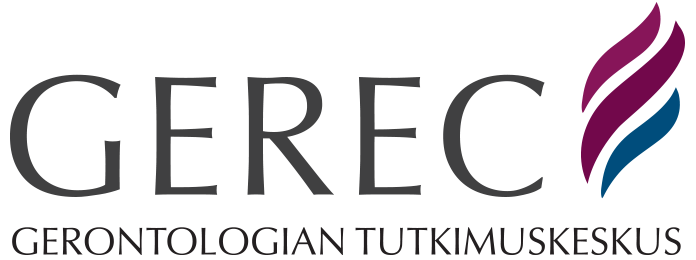
University of Jyvaskyla Active Ageing Scale UJACAS
Assessment Notes for the University of Jyvaskyla Active Ageing Scale (UJACAS)
Active ageing is one of the most broadly used terms of positive gerontology. World Health Organization (WHO) defined active aging as a policy goal in 2002 as follows: “Active ageing is the process of optimizing opportunities for health, participation and security in order to enhance quality of life as people age” (World Health Organization, 2002). The same document also states: “these policies and programmes should be based on the rights, needs, preferences and capacities of older people”. The idea was to set a goal for societies. The WHO active ageing definition can be used to guide e.g. comparison of countries regarding how age-friendly they are.
To make it possible to study active ageing of individual people, we suggest the following definition: The striving for elements of wellbeing through activities relating to a person’s goals, functional capacities and opportunities. This definition encompasses four central aspects in the active aging of individuals: their goals (what they want to do), their functional capacity (what they are able to do), their autonomy (perceived opportunities to do the valued activities) and their activities (what they actually do). The expected outcome of active ageing is promotion of wellbeing.
About UJACAS
The UJACAS is a quantitative scale for assessing active ageing among older people. However, we have not provided any exact age limits for older people. The UJACAS has 17 items with four dimension (goals, ability, opportunity and activity) and the score ranges between 0 and 272. Response options are worded to suit the item and scored from zero (lowest e.g. least active) to four (highest e.g. most active). Scores are computed by summing the scores of the individual items (response option range 0-4) of each dimension to form a subscale and of the total questionnaire to form the total score. A maximum of two missing items is allowed for each subscale and eight for the total sum score. To correct for missing items, we used the following formulas: (sum score / nr. of items responded to) * nr. of items offered. The number of items offered is 17 for each subscale and 68 for the total scale.
The psychometric and item properties are good and the scale assesses a unidimensional latent construct of active aging.
Who should use UJACAS?
UJACAS can be used in research and practice among older people. It measures individuals’ strive for activity in essential life areas. It describes the active agency of older people i.e. their initiative to act independently and to make their own free choices. In gerontology, UJACAS provides us knowledge about positive aspects of ageing. It can also be used to assess the effectiveness of various interventions aiming to promote active ageing.
Scale development
Developing the scale was a multifaceted process in which we placed high importance on participant feedback and on quantitatively analyzing item properties. We started with a draft scale produced by an expert panel, collected a pilot dataset for item response analyses and for testing validity, conducted two focus group discussions and tested the scale’s reliability in a test-retest study.
Psychometric properties
The UJACAS questionnaire comprises 17 items including four dimensions yielding four subscores. The minimum total score is zero and the maximum 272. We validated the UJACAS scores against other indicators of activity and wellbeing and an examination by an occupational therapist. All the indicators of validity and reliability are good. The item analyses showed that the UJACAS subscores capture an underlying single construct that reflects active aging and hence the total score describes active aging in a condensed form.
Limitations
One limitations is that UJACAS may generate socially desirable answers, because active approach to life is generally highly valued in Western societies. Another limitation is that the scale has been developed in the Northern European context and using it in different cultures may require further validation.
Strengths
While we developed the UJACAS we emphasized feedback from participants. User involvement in ageing research has benefits. First of all, older people should be able to influence the research that is being conducted on them. Second of all, the chance of producing findings of relevance for the wellbeing of older people is likely to be higher if they have been invited to contribute their own understandings of the issue. Other strengths include conceptual research and novel definition of active ageing that preceded the scale development and the multi-phased development process.
Copyright
The copyright owner of the scale is University of Jyvaskyla.
Administration and Cost
There is no charge to use UJACAS. To get access to the full scale, we ask you to register as an UJACAS user. In the registration form, please, let us know whether you intend to translate the UJACAS into a different language. The scale is already available in Finnish, Swedish and English. We ask you to give your contact information, a brief description of your study, and to agree to the terms of using the scale. Please, keep track of possible updates of the scale that we will announce at this website.
Collaborators translating UJACAS are requested to send the translated version to the UJACAS research group (details below). Translations of the UJACAS will be posted on the website that distributes UJACAS for use by other researchers and practitioners.
On behalf of the UJACAS research group,
Taina Rantanen, Professor of Gerontology and Public Health, Gerontology Research Center, University of Jyvaskyla, PO Box 35, Fi-40014 University of Jyvaskyla, taina.rantanen@jyu.fi
You may register as UJACAS user and download the scale in English.
Rekisteröidy UJACAS-käyttäjäksi ja lataa mittari suomeksi (in Finnish).
